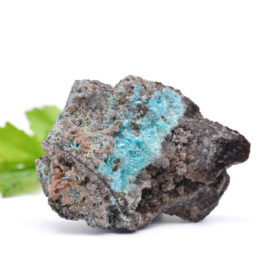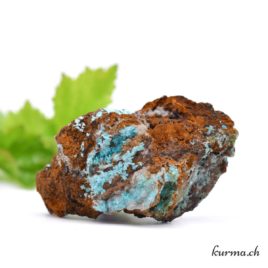Aurichalcite
The blue and green crystals ofAurichalcite, a rare stone discovered in the 19th century, give it its name, which comes from the ancient Greek:
Oreikhalos means "copper of the mountains".
In lithotherapy, this fine stone is particularly suited to sensitive and creative people.
What are the virtues of Aurichalcite in lithotherapy?
Aurichalcite's virtues lie in its ability to stimulate creativity.
Thus, to create, intuition, sensitivity and culture nourish the imagination and the development of personal expression, thanks to the importance we attach to a clear formulation of our inner self. Communicating a vision is not just a matter of intuition or illumination: trusting one's own spirit is essential to receiving, elaborating and communicating those messages described by some as divine. Aurichalcite is both a jewel and a talisman for connecting with oneself and the Gods.
The result is great peace, a reconciliation of opposites that would otherwise be a source of pain and depression. Its properties are a source of serenity and harmony.
What are the physical effects of Aurichalcite?
In lithotherapy, a clear mind is also open to healing. This generous stone helps to calm nervousness by regulating blood pressure; it is an asset for strengthening blood circulation, cholesterol and metabolism in general. This restored balance strengthens the immune system.
Where to place Aurichalcite and which stones to match it with?
You can wear it on you, in a pocket or on the part of your body where you feel pain. Your jewel is a stone of protection that will also be beneficial when meditating or in a room of your home.
Turquoise and amethyst can accompany it to potentiate their respective energies.
Aurichalcite purification
Reloading the stone
Moon/sun, running water, waveform, fumigation, singing bowl, breath/wind, prayers...Chakras
Third eye chakraAstrological signs
AllElement
AirAurichalcite mineralogy
Aurichalcite is a secondary mineral resulting from the oxidation of zinc carbonate and copper, found in deposits of these minerals in the form of acicular crystals, sometimes pearly, green and blue, star-shaped or spherical, or in more or less lamellar, transparent and granular masses.
Its hardness is 2 on the Mohs scale.
Reproduction in whole or in part of this content is prohibited. More info



